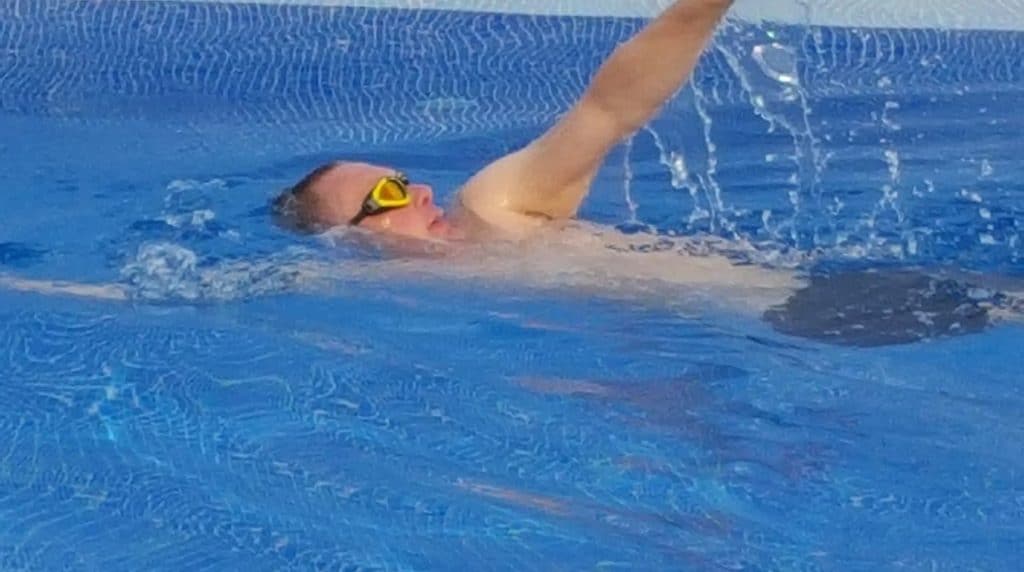Can finding a balanced front crawl breathing position be more than just a drill?
“ Kicking on the side with the face out of the water was originally devised as a drill, to give the experience of a balanced, unhurried way of coming out to breathe. It’s a dynamic resting position, where the body can breathe naturally, from the back. It may give some people the best chance of a stress free front crawl swim.”
When I had lessons with Steven Shaw twenty years ago, I felt liberated by learning to kick on my side with my face out of the water, a new way to approach front crawl breathing. It changed the way I swam front crawl because it woke up my body’s willingness to rotate. With my head nice and still in the centre and my neck relaxed as I looked at the pool floor, I could swing from side to side, one gliding arm replacing the other. The breathing stroke became one of freedom, for my face to follow my rolling body out of the water and rest there, as I fluttered my feet and sent my arm forwards.
It can be difficult to know what’s really going on when turning to breathe in front crawl. Because it all happens so fast, we go wrong in subtle ways. A little bit of twisting the neck, tensing the jaw, sucking in air or gasping. A touch of disintegration of the head/ neck/ back as the mouth rushes the face out of the water, like a fish on a hook, before the body has chance to rotate.
Before Alexander Technique lessons, I simply turned my head to breathe, bilaterally, every third stroke, and everything seemed fine. But I was in my twenties then and got away with things. Aged 48, I’m aware that my head doesn’t like me turning it much at all.
So I’m wondering these days whether, for some people, people whose heads don’t like being turned relative to their necks, kicking on the side with the face out of the water can be more than a drill, which it was originally intended it to be. A drill to engender a sense of balance and take the anxiety out of turning to breathe. A chance to practise a dynamic resting position, where your body can breathe naturally, from your back. If we can find a balanced resting place which allows us to keep our neck free, so long as we don’t over-rotate and lose our ability to return smoothly to our face down swim, there’s nothing to stop us from doing this all the time.I often ask myself what compels me to get straight in the water and breathe bilaterally, snatching a quick breath every three strokes, reproducing that old ‘one, two three and breathe’ rhythm I established when young.
Is it that resting in this balanced breathing position slows me down and I want to fit in with the swimmers in the fast lane? Do I fancy myself as the finished article, rather than someone who needs to work on himself? Am I happy to risk a bit of a tight neck, or a bit of gasping, so long as I’m swimming ‘proper front crawl’?
I do know after all these years that, if I tell myself to slow down and take my time in the breathing position; to work on finding balance in a place which allows me to keep my neck free, my head supported by the water, my back open and my in-breath natural and unforced, I have a good chance of success. So why don’t I always do it?


